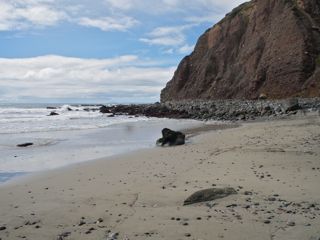
-
| 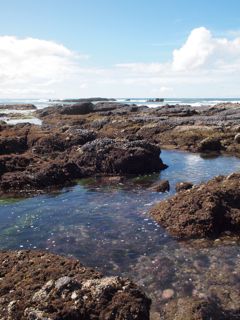
-
| 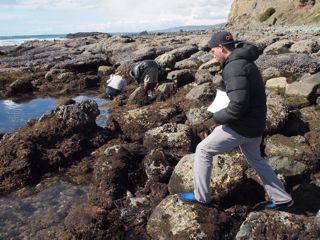
-
|
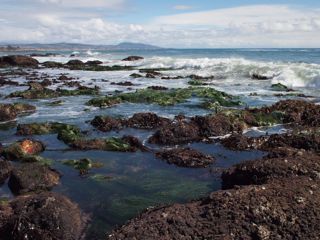
-
| 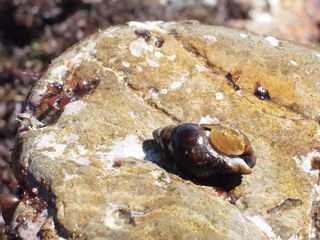
Macron lividus (reported range, Orange Co., CA south to San Bartolome Bay,
central Baja California)
| 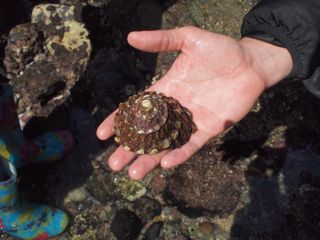
Shell of wavy turban snail (Megastraea undosa, formerly Astraea undosa)
|
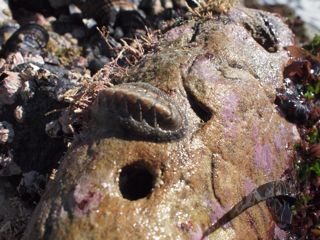
conspicuous chiton (Stenoplax conspicua)
| 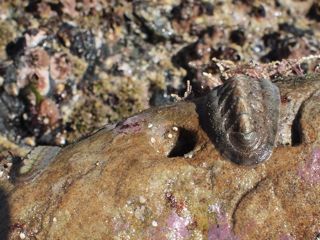
-
| 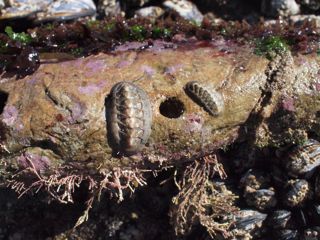
-
|
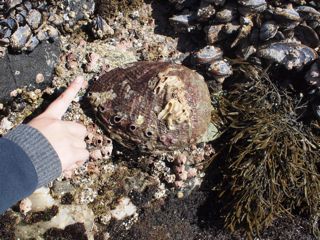
Empty shell of a Haliotis fulgens (green abalone);
according to McLean's 1978 book,
Marine Shells of Southern California, this species seldom occurs deeper than 25 feet and is restricted to the
Californian province (Pt. Conception CA to Bahía Magdelena, B.C.S.).
| 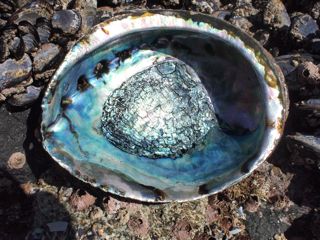
-
| 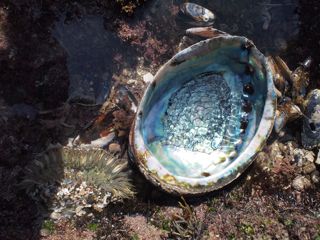
-
|
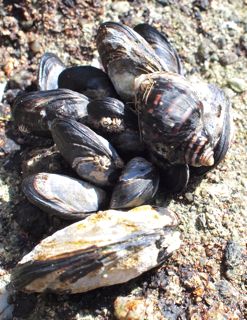
-
| 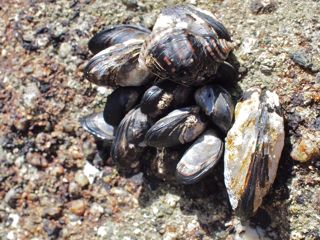
-
| 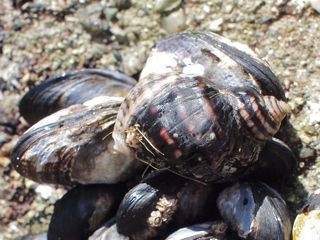
Nucella emarginata (known by various common names, including
southern banded dogwinkle; its sister species, N. ostrina, is more common north of Pt. Conception)
|
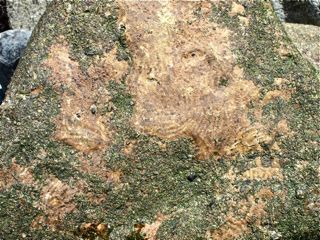
Owl limpet farmed territory, with grazing paths visible
| 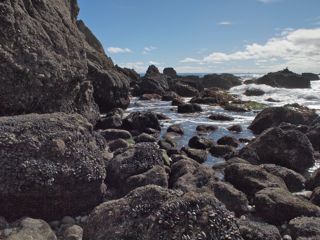
-
| 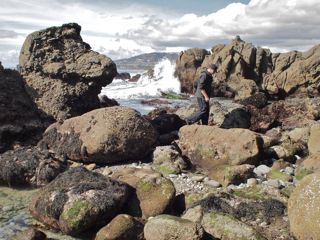
-
|
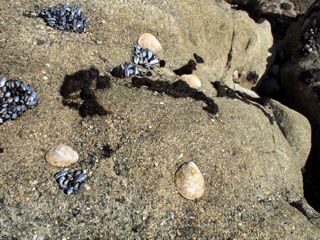
Owl limpet territories
| 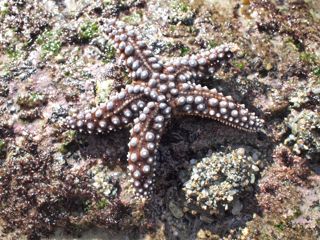
A fairly small Pisaster giganteus, more common in kelp forests than in the intertidal.
| 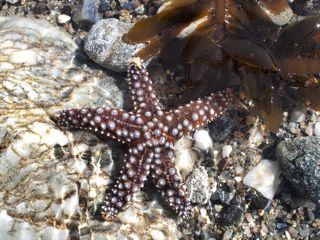
-
|
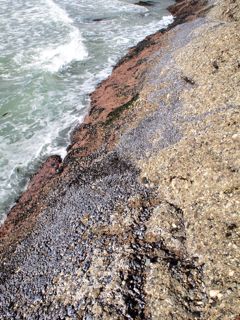
-
| 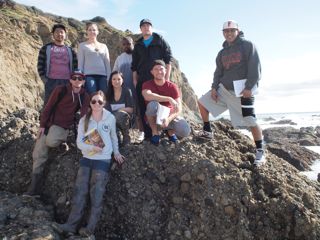
-
| 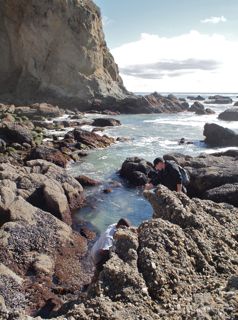
-
|
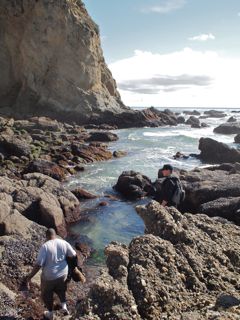
-
| 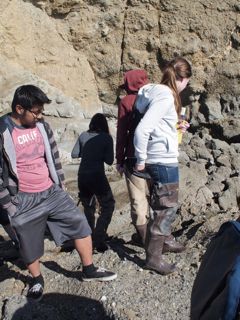
-
| 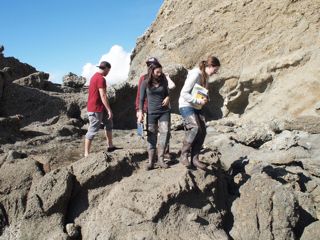
-
|
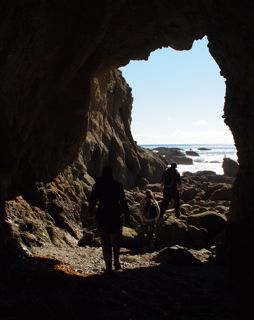
-
| 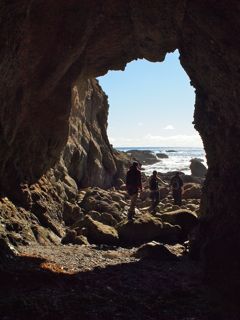
These rocks near the entrances of a few sea tunnels were good places to observe a bright red
splash zone mite species, the red "velvet mite" Neomolgus littoralis (Linnaeus 1758), which is reported in the Light and Smith
Manual to be widely distributed in both the North Atlantic and North Pacific. This is untested to my knowledge.
They are still tiny but are predators on larger flies and other prey. Don Abbott drew them in his lab guide for Hopkins Marine Station.
| 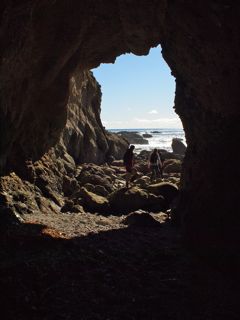
-
|
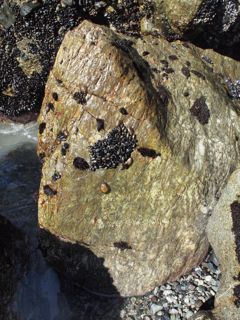
-
| 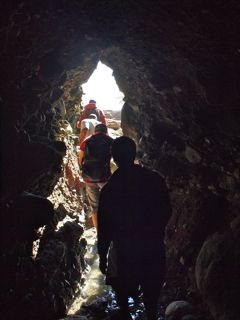
-
| 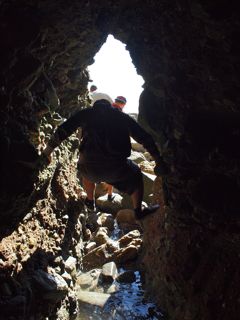
-
|
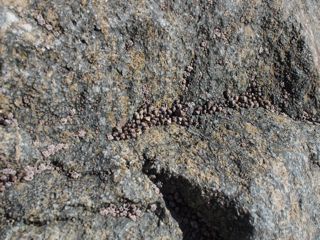
-
| 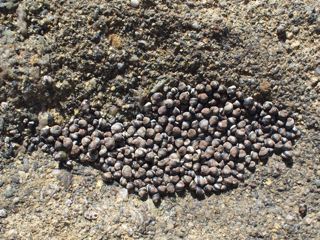
Small Littorina keenae clustered together in the splash zone. This species appears to be the dominant
littorine on most or all southern California beaches. Two other littorine species,
L. scutulata and L. plena, are mostly more northern species, but each is also known to occur further south along the Baja California peninsula.
Unlike the striped L. keenae in this image, they more commonly have a checkered appearance.
| 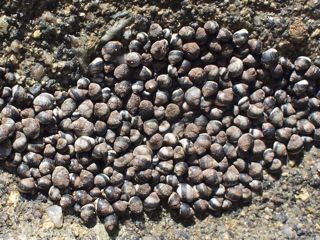
-
|
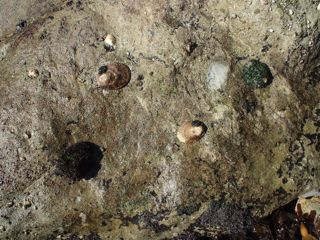
-
| 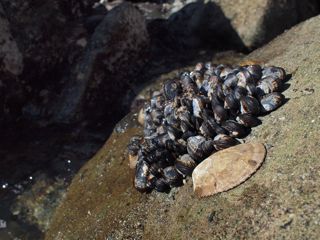
-
| 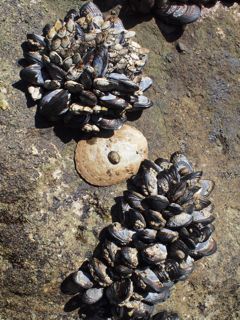
-
|
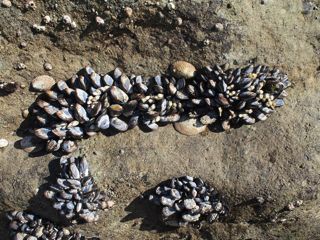
-
| 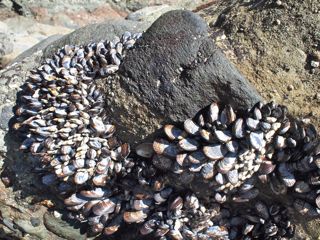
-
| 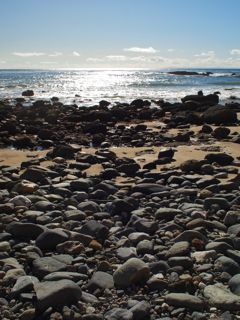
-
|
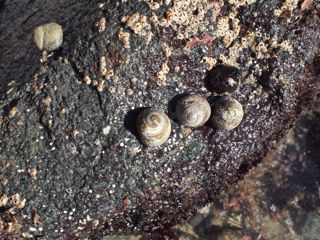
Agathistoma eiseni or Chlorostoma eiseni or Tegula eiseni?
This is one of our most common intertidal animals and there does not seem to be agreement on what what genus name to use. In her Sea Shells of Tropical West
America, Myra Keen (1972), placed this and most other Tegula species in the subgenus Agathistoma.
McLean (pers. comm.) still supports this distinction and would further elevate Agathistoma to full generic status, including A. eiseni.
McLean prefers to treat Tegula as a monotypic genus, with only one species, because of striking differences in its shell from other Panamic species.
Others consider Agathistoma to be a junior synonym of Tegula. The latter opinion would gain phylogenetic support if it were shown that the
type species of Tegula was nested well within an Agathistoma clade. McLean's view would be supported if Tegula and Agathistoma
were found to be separate clades.
The situation with Chlorostoma is different. Asian authorities have long recognized the affinities of Japanese turban snails
with Chlorostoma, whose type species lives in the vicinity of Hong Kong. In Light and Smith Manual, McLean
reassigned the Oregonian turban snails to Chlorostoma, arguing based on shell morphology that our West Coast species likewise have ties to the subtropical southeast Asian
Chlorostoma rather than to the subtropical Tegula from the Panamic.
| 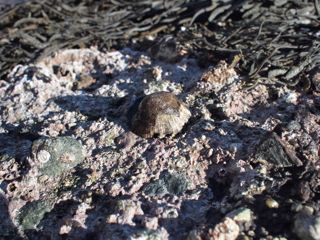
-
| 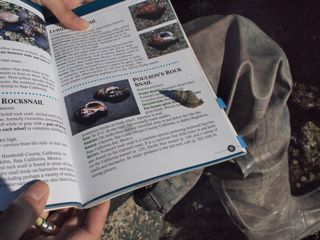
-
|
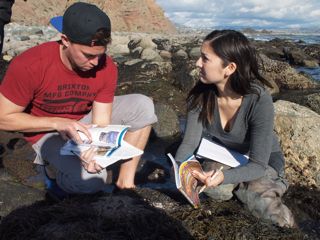
-
| 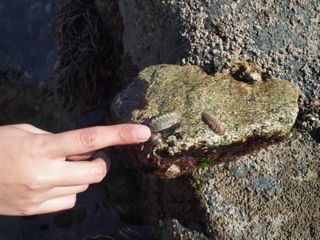
-
| 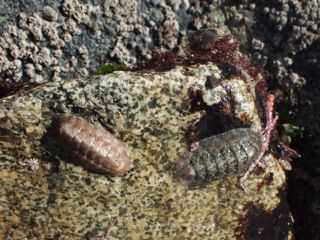
-
|
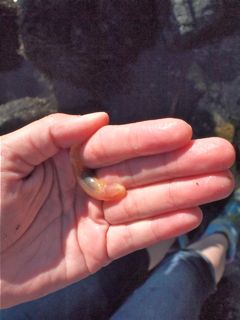
This is a California blind goby (Typhlogobius californiensis), which lives with its
paired-for-life mate in the burrow of a pair of tidepool ghost shrimps, Neotrypaea biffari (formerly Callianassa affinis), which also live
as lifelong mated pairs. The gobies first mate within six months following birth. This one was at the surface under a rock (no other gobies
or ghost shrimps were seen, like they have been on other occasions) - see also here: 1 -
2 - 3.
| 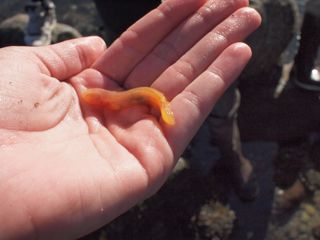
This species of goby was discovered and first studied in the 1800s, but further studied by one
of my personal heroes, Prof. G. E. MacGinitie, in 1939 (Amer. Midl. Nat. 22: 489-505). According to him, the gobies live beneath the tidepool ghost
shrimps in their burrow. Food that is rejected by the shrimp is often eaten by the fish.
| 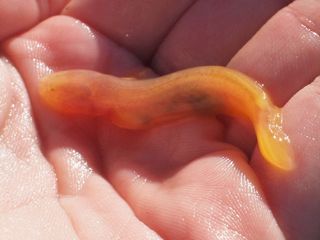
MacGinitie argued that the fish first lost its eyes after it became associated with
these shrimps, however, this hypothesis might be contradicted if it has blind relatives. California blind gobies are one of only two blind
gobies on this coast (but note that rudimentary or vestigial eyespots seem apparent in this image); the other is the halfblind goby,
Lethops connectens, which lives subtidally associated with reefs or kelp holdfasts
(central Calif. to Baja Calif.). The arrow goby (Clevelandia ios) might also be found in tidepool ghost shrimp burrows but could be
restricted to muddier areas (see Mike Dawson et al, 2002; Mol Ecol. 11(6):1065-75). Another closely related goby is
the longjaw mudsucker, Gillichthys mirabilis, which has functional eyes.
|
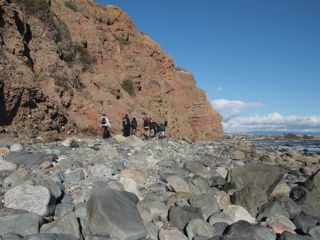
-
| 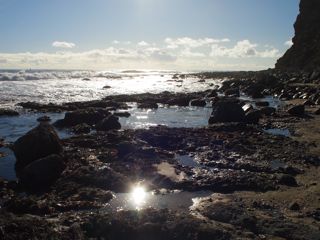
-
| 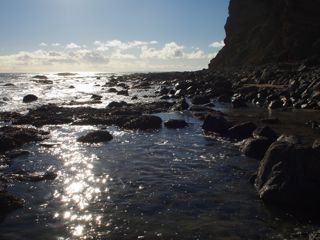
-
|
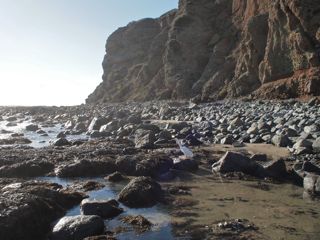
-
| 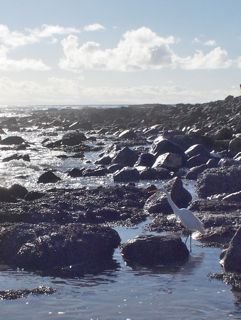
-
| 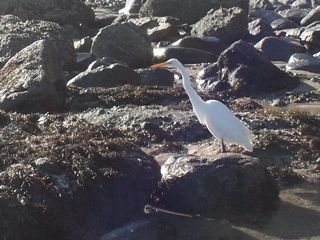
-
|
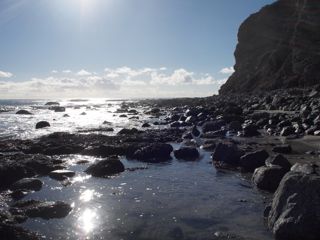
-
| 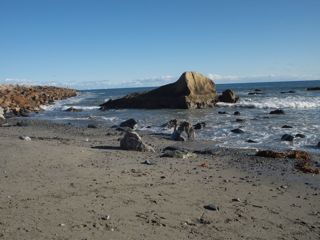
-
| 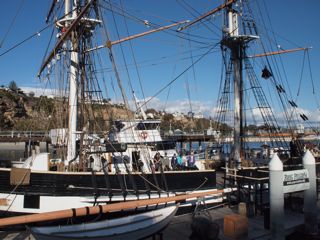
-
|
 Under Construction!
Under Construction! Under Construction!
Under Construction!